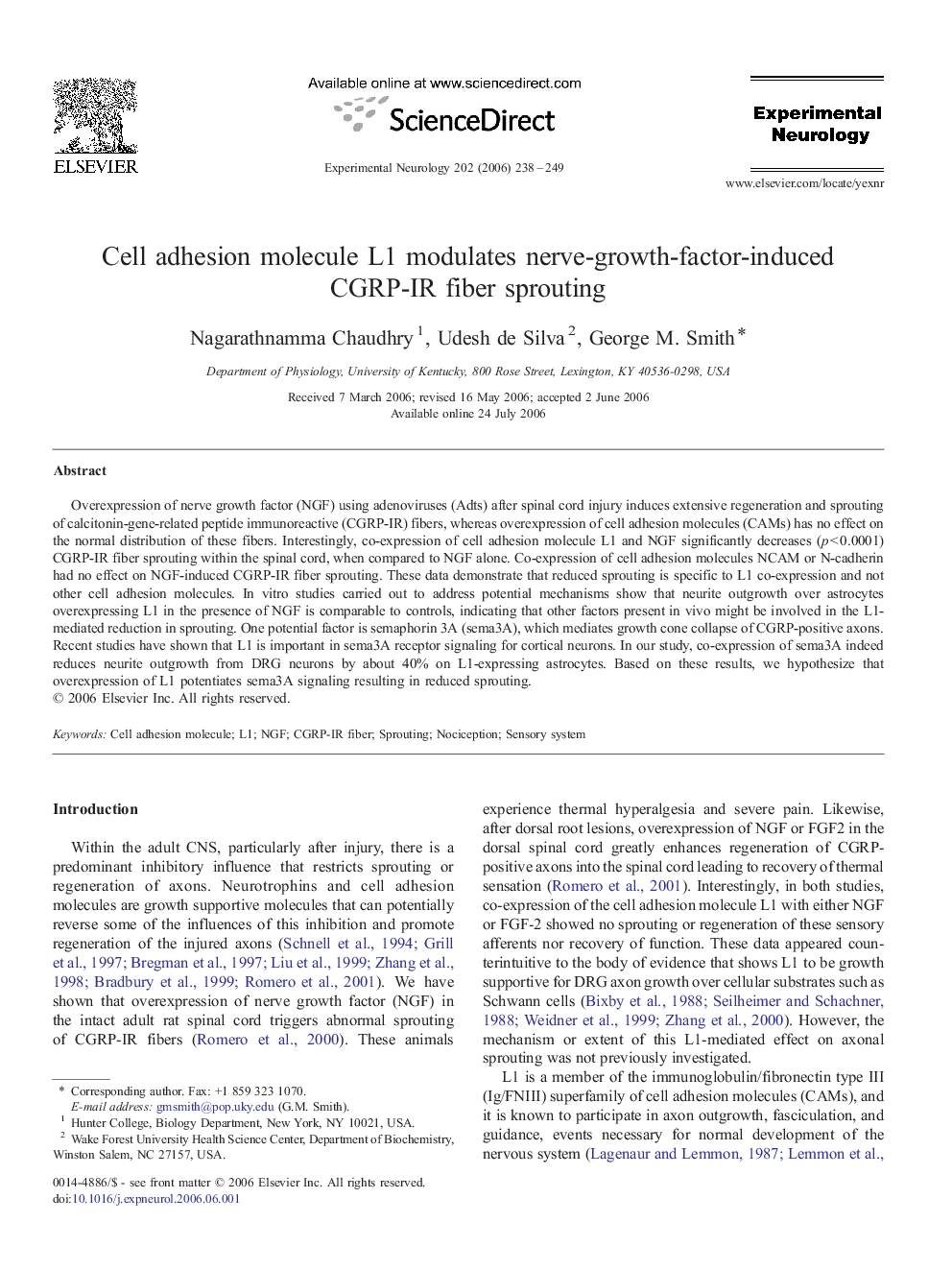| Article ID | Journal | Published Year | Pages | File Type |
|---|---|---|---|---|
| 3057340 | Experimental Neurology | 2006 | 12 Pages |
Overexpression of nerve growth factor (NGF) using adenoviruses (Adts) after spinal cord injury induces extensive regeneration and sprouting of calcitonin-gene-related peptide immunoreactive (CGRP-IR) fibers, whereas overexpression of cell adhesion molecules (CAMs) has no effect on the normal distribution of these fibers. Interestingly, co-expression of cell adhesion molecule L1 and NGF significantly decreases (p < 0.0001) CGRP-IR fiber sprouting within the spinal cord, when compared to NGF alone. Co-expression of cell adhesion molecules NCAM or N-cadherin had no effect on NGF-induced CGRP-IR fiber sprouting. These data demonstrate that reduced sprouting is specific to L1 co-expression and not other cell adhesion molecules. In vitro studies carried out to address potential mechanisms show that neurite outgrowth over astrocytes overexpressing L1 in the presence of NGF is comparable to controls, indicating that other factors present in vivo might be involved in the L1-mediated reduction in sprouting. One potential factor is semaphorin 3A (sema3A), which mediates growth cone collapse of CGRP-positive axons. Recent studies have shown that L1 is important in sema3A receptor signaling for cortical neurons. In our study, co-expression of sema3A indeed reduces neurite outgrowth from DRG neurons by about 40% on L1-expressing astrocytes. Based on these results, we hypothesize that overexpression of L1 potentiates sema3A signaling resulting in reduced sprouting.
